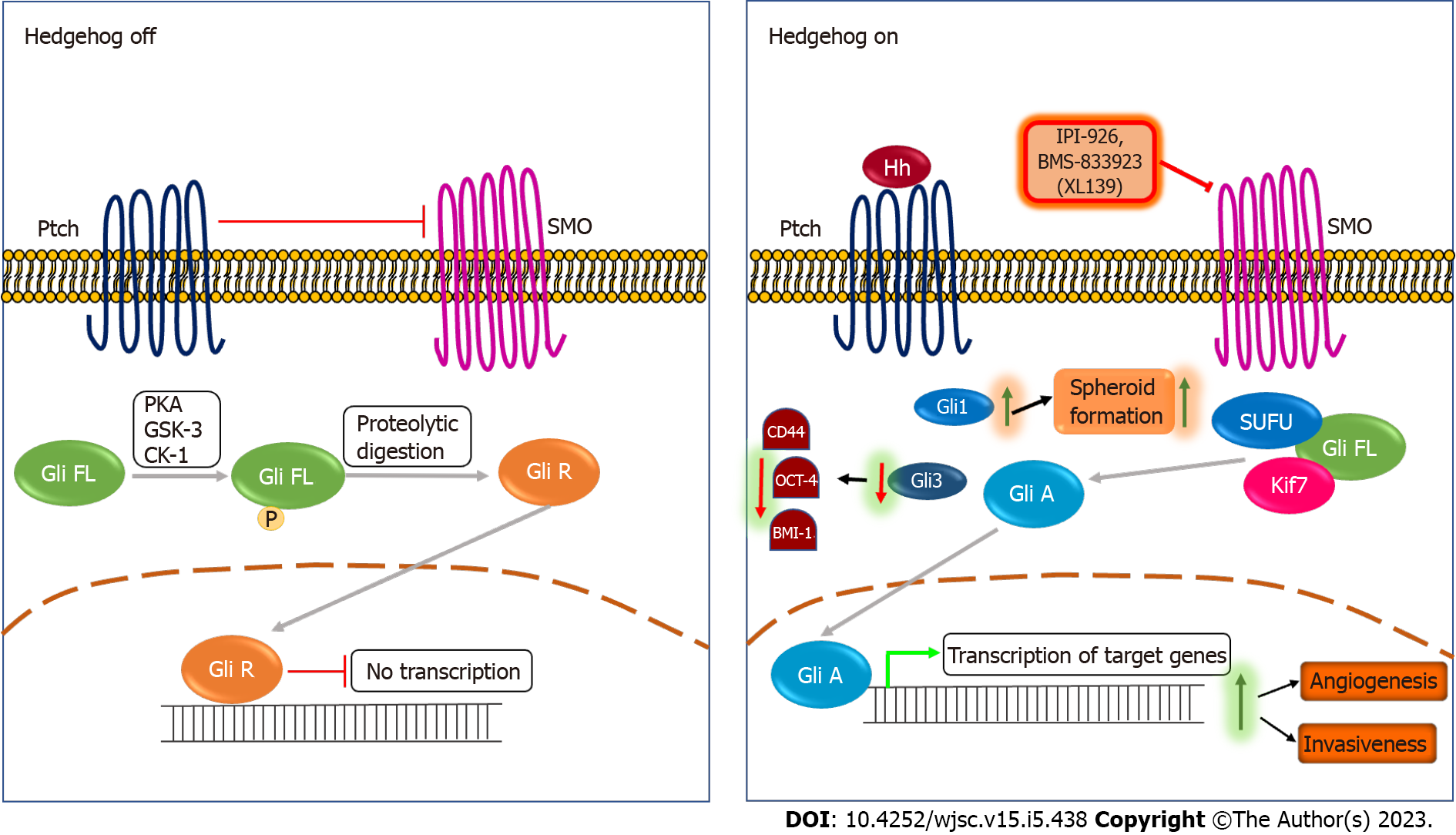Copyright
©The Author(s) 2023.
World J Stem Cells. May 26, 2023; 15(5): 438-452
Published online May 26, 2023. doi: 10.4252/wjsc.v15.i5.438
Published online May 26, 2023. doi: 10.4252/wjsc.v15.i5.438
Figure 2 The Hedgehog signaling pathway and cancer stemness.
In the absence of Hedgehog ligand, Patched inhibits smoothened (SMO), leading to the full-length Gli protein that gets phosphorylated by PKA, GSK-3 and CK-1 and converted into Gli repressor through proteolytic digestion. The Gli repressor further inhibits the Hedgehog pathway. When the Hedgehog ligand binds to the Patched receptor, the inhibition on SMO is released, leading to the dissociation of Gli from SUFU and Kif7 that lead to the activation of the Gli protein (Gli A). Further, Gli A translocates to the nucleus that further activates transcription of target genes. Activation of the Hedgehog pathway promotes angiogenesis and invasiveness in vivo[57,58]. Downregulation of Gli3 reduces expression of stemness markers such as CD44, OCT-4, and BMI-1 in tongue carcinoma (TSCC) cells[59], while upregulation of Gli1 increases the spheroid formation ability of TSCC cells[60]. IPI-926 and BMS-833923 (XL139) are SMO inhibitors used to therapeutically target the Hedgehog pathway. IPI-926 is a semi-synthetic derivative of cyclopamine, while BMS-833923 (XL139) is a small molecule inhibitor of SMO. Ptch: Patched; SMO: Smoothened; Hh: Hedgehog ligand; Gli FL: Full length glioma associated oncogene; Gli A: Gli activator; Gli R: Gli repressor; IPI-926, BMS-833923 (XL139): Smoothened inhibitors.
- Citation: Joshi P, Waghmare S. Molecular signaling in cancer stem cells of tongue squamous cell carcinoma: Therapeutic implications and challenges. World J Stem Cells 2023; 15(5): 438-452
- URL: https://www.wjgnet.com/1948-0210/full/v15/i5/438.htm
- DOI: https://dx.doi.org/10.4252/wjsc.v15.i5.438









